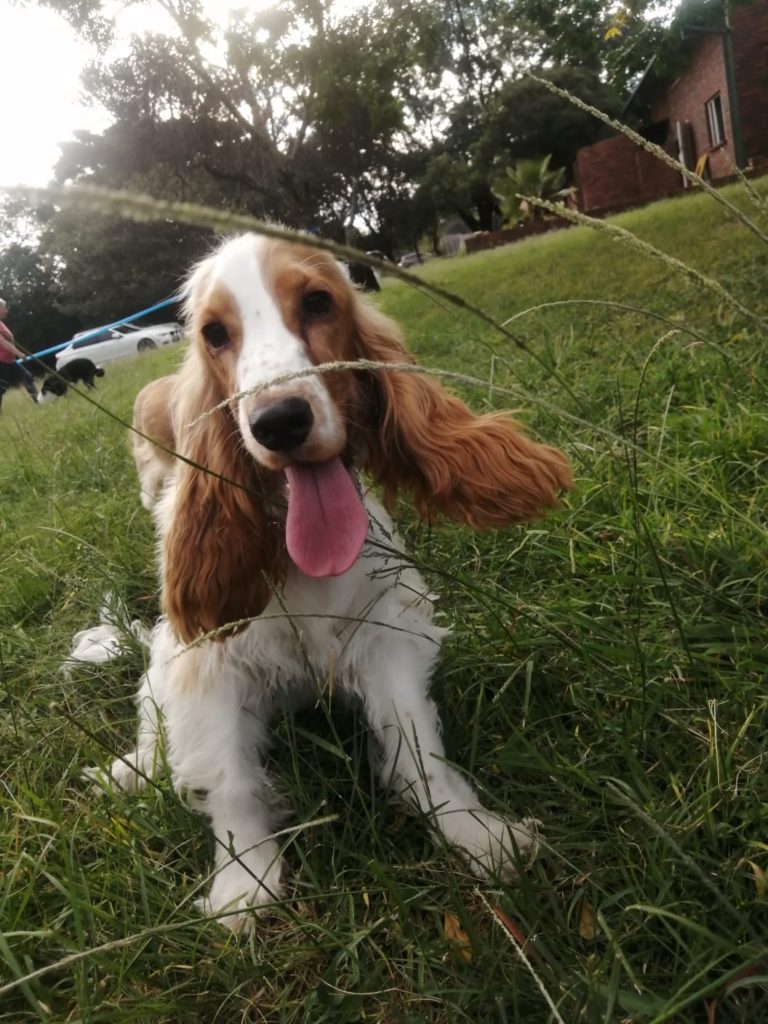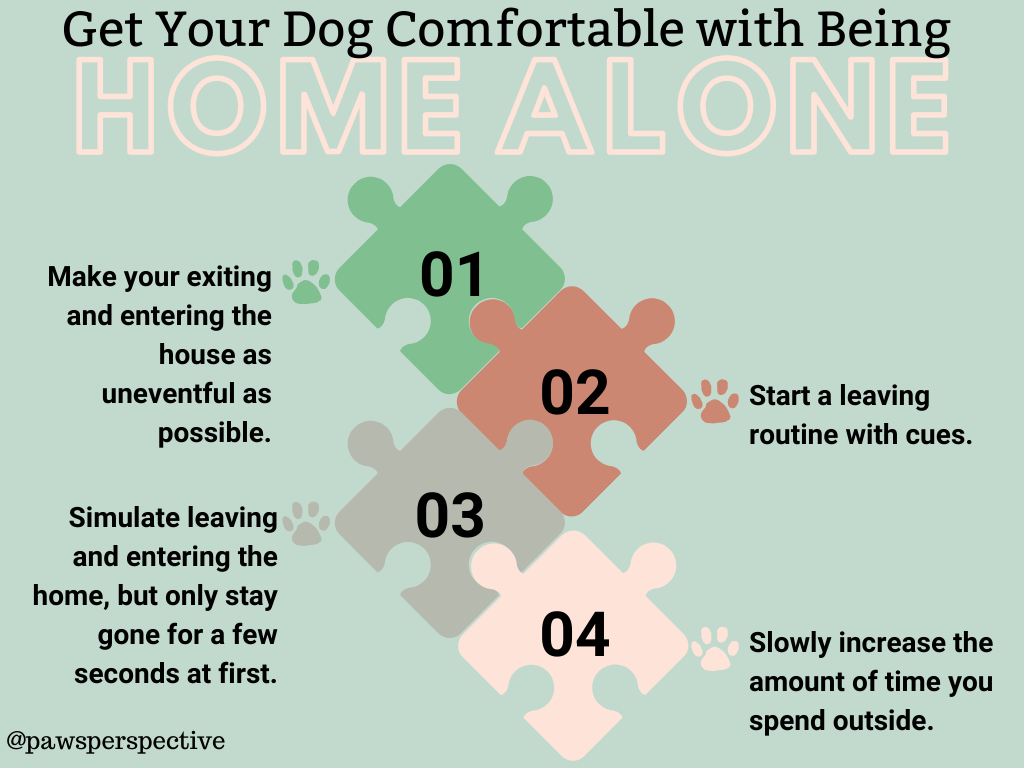My youngest Cocker Spaniel (Joey) struggled with Separation Anxiety to such an extent that we couldn’t go anywhere. He would whine and cry, annoying the neighbors and leading to many unhappy texts about the noise he was making.
At first, we tried all the advice online, from going for walks before leaving to trying white noise. And to be honest, it didn’t work at all. Now, as a dog trainer, this situation defeated me. I felt I couldn’t help my dog as much as I was supposed to. Did the problem lie with me? One thing was sure: those methods didn’t work for Joey and won’t work for dogs with severe separation anxiety.

White noise won’t help a dog with separation anxiety as it doesn’t cure the underlying cause: anxiousness. Don’t get me wrong. It does have its place, but don’t expect it to cure your dog’s separation anxiety without other interventions.
White noise was probably one of the first things I’ve tried with Joey. It worked for a while, but its effectiveness wore off. But his anxiety was triggered by other sounds coming from the apartment building. So no matter how loud we put the music, he would hear a triggering sound and start barking and crying without stopping.
But what was going on here? I had to figure it out! If not for Joey’s sake, then for the neighbors’!
Why White Noise Won’t Help a Dog With Separation Anxiety
White noise is essentially any form of background noise. It can be music, a loud fan, a series playing in the background, or even the tumble dryer switched on. The idea behind using this type of noise with dogs suffering from separation anxiety is to take their minds off the fear.
If a dog is in an intense anxious state, no amount of white noise will help ease their separation anxiety. That’s because this type of anxiety is brought on by you leaving the dog home alone. White noise might be a noise distraction, but it doesn’t change the fact in the dog’s mind that you’re gone.
You see, dogs with separation anxiety experience a feeling of fear and dread like a person with a panic attack would. The RSPCA says dogs go into a state of distress when their owners leave them home alone. It’s not just a case of putting on some music and curing your dog in the process. Music might help distract your dog slightly, but they still need to learn to cope by themselves.
The same goes for chew toys, by the way. It might be a distraction for a while, but that’s all it will be: a distraction. If the separation anxiety is that bad, nothing except positive training methods, time, and patience will help them cope. If you want to learn more about positive training methods, read this article on the magic of positive reinforcement.
Joey’s separation anxiety worsened whenever he heard unfamiliar sounds near our apartment. He would already be nervous about us leaving home, but he would panic as soon as strange noises infiltrated the walls. In his little canine mind, barking might ward off the unknown threat, and crying might bring me back home sooner.
So, it made sense to use white noise while I did some separation anxiety training with him. It’s supposed to act as a tool to help you teach your dog to cope, not the training method itself.
How to Use White Noise for Dogs With Separation Anxiety
Okay, so you know that white noise is an additive to teaching your dog to cope and that you shouldn’t rely solely on background noises to ease your dog’s anxiety. But how do you use white noise then?
Use white noise to act as a cue to prepare your dog for being home alone. As you incorporate this into your training, your dog will soon learn that turning on the music or TV means that they will be alone for a while, but that you WILL COME BACK!
Did you hear those magic words? “YOU WILL COME BACK. “ Dogs with separation anxiety didn’t form positive associations with being alone yet. They fear this alone time, and you’ll need to train them to have positive associations with your absence.
How to Help Your Dog Form Positive Associations With Being Alone

1. Make your exiting and entering the house as uneventful as possible.
This means no hugs, kisses, or baby talk 5 minutes before you leave and 5 minutes after you come home.
2. Start a leaving routine with cues.
Your dog notices when you grab the keys or put on your coat, so incorporate this into your training. Pretend you’re leaving the house like you usually would and even throw some white noise into the mix.
3. Simulate leaving and entering the home, but only stay gone for a few seconds at first.
When you start your training, use the above info and only wait out of the house for a few seconds. It has to be far enough so your dog can’t hear or smell you but close enough that you can return quickly.
4. Slowly increase the amount of time you spend outside.
If you’ve started with 5 seconds, try 10 seconds next time. This will help your dog learn to cope for longer and longer periods. You can also mix the times you stay away. Do short sessions interchangeably with longer sessions, so your dog doesn’t predict the training pattern.
These tips are basic strategies you can start with, but there is more to separation anxiety training than this. It’s a complex condition and might call for more complex methods. However, if you start with these small tips, you will definitely take a step in the right direction.
It’s a slow process, and you must be committed, patient, and above all, love your dog enough to put in the time. Trust me. I’ve been there: embarrassed, concerned, defeated, and even angry. But it will get better with some work. So, don’t give up.
The Paws Perspective
Some dogs suffer from severe separation anxiety. Others are just bored. In many cases, bored dogs are often confused with separation anxiety. So, be sure that you know which your dog struggles with so you can help them with the correct methods.
White noise, toys, and exercise might help bored dogs, but they won’t do much for those struggling with separation anxiety. You’ll have to incorporate training into the mix to give your dog the best chance of getting through this scary condition and having fun.
Remember, you are your dog’s voice, and they have no one else but you to advocate for them. So, thank you that you’re interested enough to read about this condition. I’m sure your dog loves you, even more, knowing that you have their best interest at heart.
